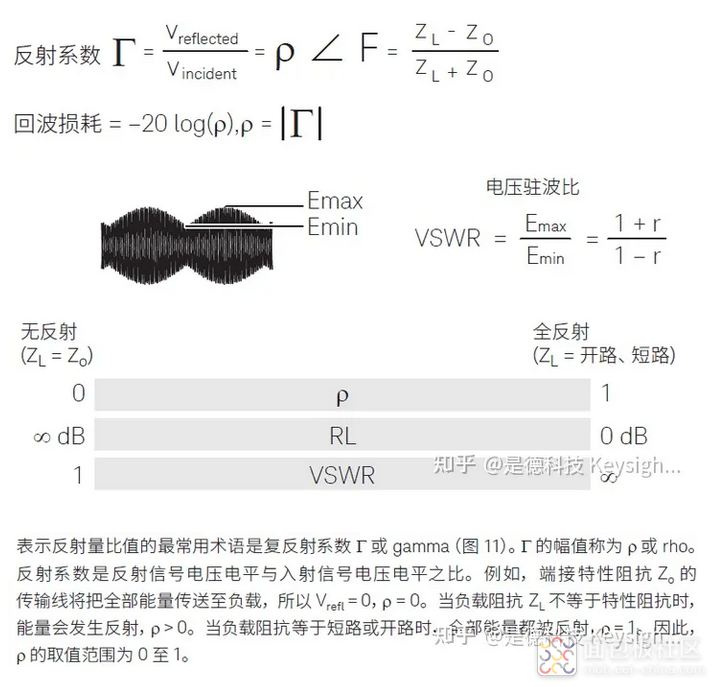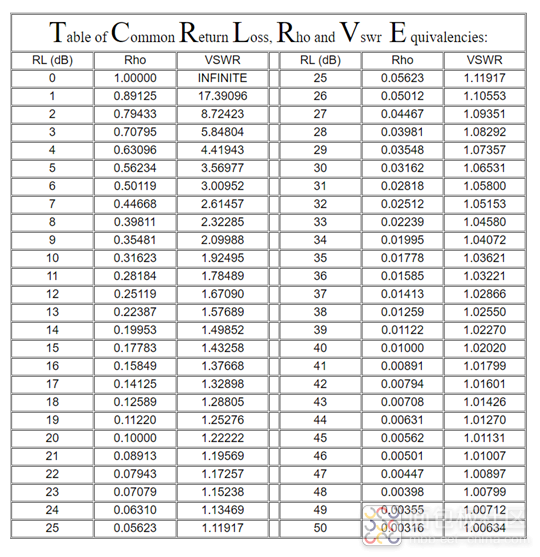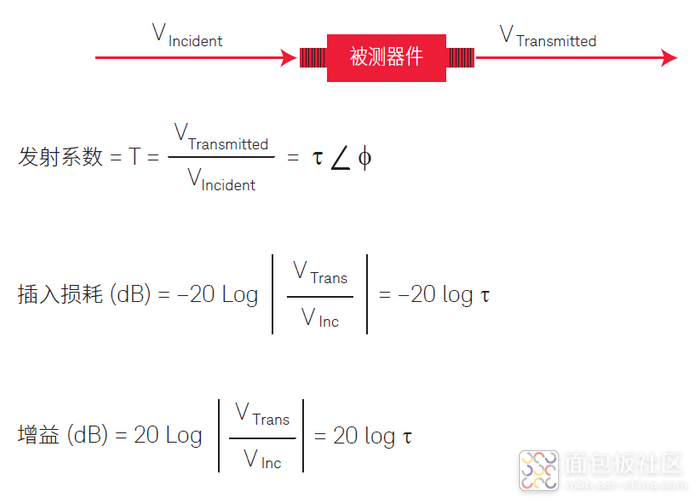
以dB为单位给出回波损耗(变量 = RL ),然后计算 VSWR:
反射系数的幅度定义为 Rho , 这里 Rho = ( 10 ^ (RL/-20)):
也就是说如果 RL = 20dB, 计算 Rho = (10 ^ (20/-20)) = 10 ^ (-1) = 0.1
下一步, VSWR = Emax / Emin = ( 1+ Rho) / (1 - Rho)
在上面的例子中 VSWR = ( 1 + 0.1) / ( 1 - 0.1) = ( 1.1 / 0.9 ) = 1.222:1
因此对于 20dB 的回波损耗,等效 VSWR 为 1.222:1
同样,将 Rho 代入 VSWR 等式, 按下式计算:
VSWR = ( 1 + [ 10 ^ { RL/-20 }] ) / ( 1 - [ 10 ^ { RL/-20 }] )
Table of Common Return Loss, Rho and Vswr Equivalencies:

传输系数
传输系数的定义为总发射电压除以入射电压(參考下图)。
若发射电压的绝对值大于入射电压的绝对值,则意味着被测器件或系统有增益。若发射电压的绝对值小于入射电压的绝对值,则意味着被测器件或系统有衰减或插入损耗。传输系数的相位部分称为插入相位。

来源:是德科技






 /2
/2 

